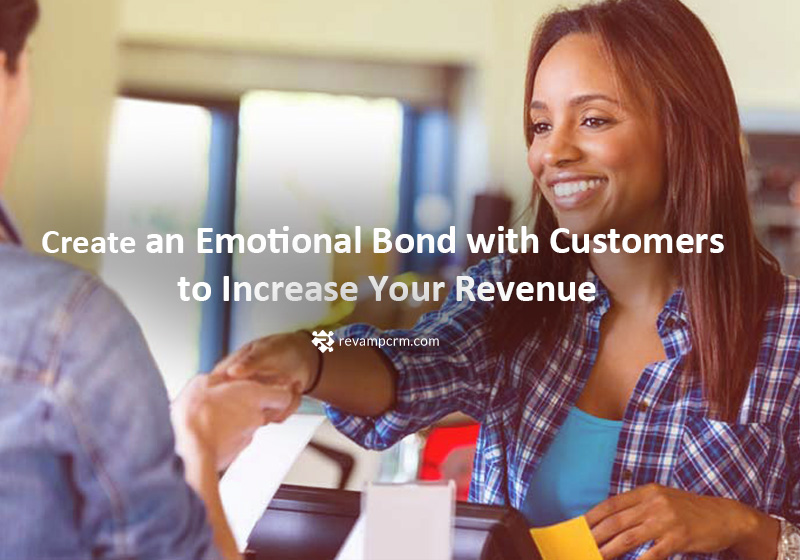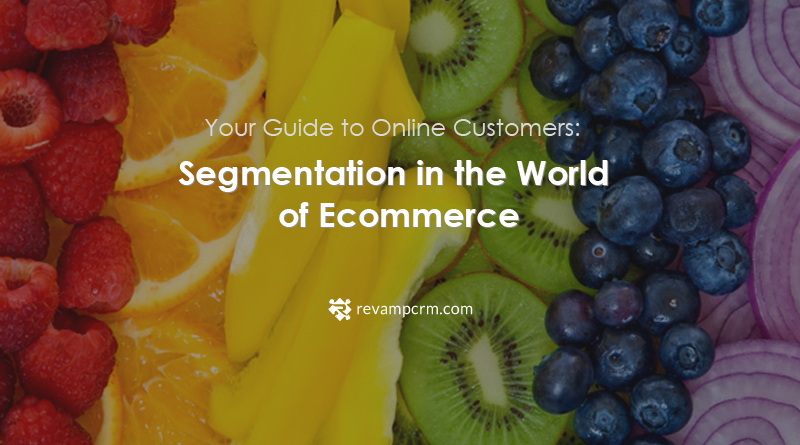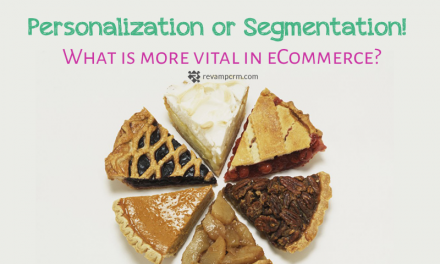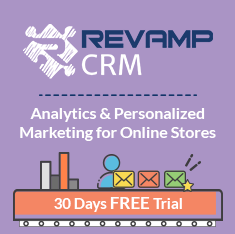Loyal customers, those that make repeat purchases frequently, are the core of any successful business. Regular clients help your business become sustainable. However, one in six customers is susceptible to cutting your business off. Having loyal customers means converting new customers into repeat customers. 21% of those who bought once bought again, 46% of those who bought twice bought again and 61% of those who bought three times bought again. Furthermore, repeat customers don’t just buy more, they spend more. This shows that the more loyal one customer is, the more revenue that customer will generate. Create Emotional Bond
The Adobe 2012 report shows that repeat shoppers, who represented just 8% of all site visitors, accounted for nearly 41% of total online sales. Moreover, another report shows that campaigns with purely emotional content performed twice as well when compared with those with only rational content. Thus, one of the fastest ways to ensure long-term revenue streams is to create strong emotional bonds and personal relationships with customers.
While many companies focus on growing their customers base, they don’t seem to realize that the cost of a new customer acquisition is 7 times more than the cost of retaining a customer. Customer retention and brand loyalty help companies survive tough economic times since these repeat customers generate most of a company’s revenue. Therefore, it is important to connect with these customers on an emotional basis to convert new customers to repeat ones and successfully retain them. Create Emotional Bond
How do I create an emotional bond with customers?
Here’s how:
1- Stay in Regular Contact with Customers
Frequent interactions with people make them our friends. The same goes for business. Businesses should engage with customers as much as possible to build a relationship that sticks. This relationship can keep you one step ahead in tracking customers’ dissatisfactions and solving problems before they lose you a customer. In fact, 96% of customers don’t complain when they are dissatisfied and 91% will leave and never return. Thus, to be able to counteract that, building a relationship with your customers will keep you aware of how your product or service is faring. Revamp CRM integrates the customer feedback tools you use into its software to help you segment customers according to their level of satisfaction and to be able to better remedy their problems. Create Emotional Bond
Here are some ways you can stay in regular contact with customers:
- Follow up with customers when they sign in and after a purchase or abandoned cart
- Send them friendly reminders of products or even just a hello
- Forward blog posts that may be valuable to them
- Email them monthly about new product releases or interesting content
When customers make a purchase, you don’t need to start selling to them again immediately. Take a little time to create an emotional connection. Give them reasons to fall in love with your brand.
2- Customize
Don’t just repeatedly send your customers mass marketed messages, but also reach out to them on a personal basis. Personalized emails deliver 6 times higher transaction rates. Customize your messages by using customers’ names or by including email content that they personally relate to. Include offers that align with their interests to strengthen your relationship with them. Through the Revamp CRM software, you can set up triggered campaigns that send these emails for you automatically. Revamp CRM also allows you to customize and segment your customer base according to the traits you specify.
3- Get close, interact and listen.
Staying in contact through sending messages and customization are both amazingly effective strategies, yet seem to be only one way. The best way to find out what a customer truly thinks about a product or service is by asking and listening. Many business owners fail to actively listen to their customers. On the other hand, businesses that repeatedly listen to customers and act on the information can perhaps earn a special place in the hearts of customers. Create Emotional Bond
By asking questions, businesses can learn where the customers’ problems lie and can develop solutions and offer promotions to remedy them, all which demonstrate a level of care. The process of problem-solving through listening may elevate the business in the consumers’ minds.
4- Develop the company’s personality

People do business with people not companies. People also do business with companies that have a personality. When setting a company personality, make it as focused as possible. Understand the segment of the population you are targeting and the personality traits they connect with. Developing a personalized brand for them can turn a company into more of a friend and less of a business. Moreover, the world’s most loved brands sell one emotional connection that drives their entire marketing approaches and is integrated into every corner of their business, such as: Apple = innovation

This is how Apple connects with its own employees and with its customers. It identified itself as that from the very beginning which has eventually led to it becoming that.
5- Trigger emotions
A good product can be really successful once people feel an emotional connection with it. Successful brands sell more than just the product. They sell the experience of the product. For example, Volvo has always put emphasis on safety. Concern about safety can be a means to advertise, because it relates to strong emotions. Especially when it comes to parents. Below are a few methods you can use to trigger emotions.
The personality of a company also shows in the tone of its updates and the content shared in its posts and emails. To more effectively connect with customers, you need to transform your content to become more personal. Here’s how:
- You: Use the word “you.” It appeals to the individual.
- Headline: Make the connection in the headline. People may not read your emails, but they will read your headlines.
- Audience: Know your audience inside out. Identify and directly talk to them in your messages.
- Feeling: Focus on creating messages that arouse feelings. The masters of emotional connection know that the most powerful forms of decision-making don’t happen through analytical rigor, but through emotional persuasion.
- Images: Add relevant photos that communicate and reinforce the feelings you want to send.
The best example of a company that incorporates most of these is the following image of Rexona. It uses “you”, identifies its audience as athletic and speaks to them through content and imagery.
6- Feature Your Fans in Your Content

Has one of your customers given you a good review or said something great about you? Reciprocate this by featuring them in a post to let them know you appreciate their efforts. This mutual appreciation will strengthen the bond between you two and it’ll eventually make your brand a priority for them.
Soda Stream is probably the best example of this. They regularly put their fans in the spotlight on their Facebook page and blog. They regularly engage with customers through contests as well as creating a buzz featuring the people who won. This has actually enabled them to collect user-created content they can use to bring even more customers.
7- Give Customers an Upgrade
If some of your customers are actively engaging with your brand, they’re the best candidates to offer the full experience. If you have a product line, send them something they haven’t tried. If you have a premium service, give them the upgrade for free. It’ll cost you so little compared to the impact those customers will have on their friends, family, colleagues, and social followers.
8- Be There When Customers Need You
When you receive a complaint through any of your marketing channels, do not redirect customers to the customer service page. Instead, stay on their side while the problem is solved. Actively help them find the solution or getting them directly connected to the person who can help them (without having to sit on hold or wait for an email response). Great customer service is a commonality among most truly successful businesses. If you manage to successfully do that, you capture this customer forever. The customer then becomes emotionally attached to this company that went above and beyond to solve their problems.
Moreover, remember that word of mouth doesn’t just happen when you do something right. In fact, a study from ZenDesk and Dimensional Research found that people who had bad experiences with customer service were 50% more likely to talk about it on their social channels than those who had good experiences. Also, they shared the bad experience more than 5 times.
9- Practice inbound marketing
Traditional ‘Outbound Marketing’ has focused on going to where customers live and interrupting their day to show them your products and services such as TV ads. On the other hand, in Inbound Marketing, customers come to you. It’s commonly known as ‘pull-marketing’ as opposed to ‘push-marketing’ and is a great tactic to help with building customer relationships.
Inbound Marketing can be achieved by creating really valuable content that solves your customers’ real-world problems. By sharing your content on the web through social media and by engaging in relevant online communities as well as practicing emotional marketing tool, you instead allow customers to seek you out. Furthermore, inbound marketing costs 62% less per lead than outbound marketing and is considered a lead generation tool. It helps you build stronger customer relationships and keeps the conversation going by feeding customers useful content.
Finally, it’s valuable to understand that customers don’t usually remember what you do for them as much as how you made them feel. This is where you can unveil your emotional benefit.




![Men vs Women: Online Shopping Behavior and Buying Habits [infographic]](https://blog.revampcrm.com/wp-content/uploads/2016/08/25-Blog-page-2-440x264.png)


